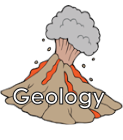All good things must come to an end- today I’m sharing the last of my free documents for digital notebooks from our geology unit. Check out the previous posts for more free stuff on scientific inquiry, ecology, and chemistry. To learn more about why I use digital notebooks and how to set them up, check out my digital notebook page here.
Geology Unit
 This 6th grade geology teaches students how geological forces shape and change our Earth, including the basics of plate tectonics and the rock cycle. Also included in this unit is a mini-unit Engineering for Earthquakes that teaches students critical thinking skills and the engineering design process. It’s a big unit, so I’ve divided the documents into 3 sections: plate tectonics stuff, rock cycle stuff, and engineering for earthquakes stuff.
This 6th grade geology teaches students how geological forces shape and change our Earth, including the basics of plate tectonics and the rock cycle. Also included in this unit is a mini-unit Engineering for Earthquakes that teaches students critical thinking skills and the engineering design process. It’s a big unit, so I’ve divided the documents into 3 sections: plate tectonics stuff, rock cycle stuff, and engineering for earthquakes stuff.
We teach this unit at the end of 6th grade because it is probably the most challenging conceptually for students- most of geologic process are on a vast scale of time and scope, and go unnoticed in everyday life. To make the concepts clearer, this unit involves a lot of modeling- both using models and making models- which help students to better visualize the gradual and unseen changes. Credit for the geology unit activities goes to Rice University, the US Geological Survey, YouTube teacher Michael Sammartano, my former teaching partner Melacyn Turner, our tech integrator Chet Garber, and also my brother Ross (who’s a practicing geologist).
- Geology Study Guide (gives an overview of the standards of the unit and many learning resources for students)
Plate Tectonics Lessons:
- History of the Earth (geologic time scale)
- Inside the Earth (layers of the Earth)
- Movement inside the Earth (convection, adapted from Steve Spangler)
- Continental drift (Alfred Wegener’s theory, adapted from USGS)
- Seafloor spreading and an assessment (using app Explain Everything)
- Discovering plate boundaries (with maps from Rice University)
- Discovering plate boundaries (part 2)
- Yummy plate boundary model (types of plate boundaries)
- Geological disasters (earthquakes, volcanoes)
Plate Tectonics Homework Assignments:
- Earth is like a _____ homework (layers of the Earth)
- Continental drift homework (Alfred Wegener’s theory)
- Plate boundaries simulation homework (plate boundary types)
Plate Tectonics Assessments: (with the exception of tests for obvious reasons!)
Besides a test, the other main summative assessment for plate tectonics is a tour of disasters around the world that students plan using the new and nifty Google Tour Builder. It’s like a simplified version of Google Earth perfectly designed for making geographic presentations. For the assessment students apply their understanding of plate tectonics and their geological map-reading skills to find locations that have high and low risks of volcanoes and earthquakes. They then create a presentation on Tour Builder showing all of the locations they choose and explaining the plate tectonic forces at work in each place.
- This tour is a disaster! (introducing the project)
- Looking for disasters (a lesson explaining how to find disasters)
- Disaster tour rubric
Rock Cycle Lessons:
- Rocks introduction (classifying the 3 types)
- Rock cycle journey and map (adapted from GeologyOnline)
- Rock flow chart (adapted from Michael Sammartano, used in the next 3 lessons)
- Igneous rocks
- Metamorphic rocks
- Sedimentary rocks
- Rock cycle review (with resources from Learner.org)
Rock Cycle Homework Assignments:
- Rock cycle story homework
- Sedimentary rock video homework (also a formative assessment)
Rock Cycle Assessments:
As an assessment of their understanding of the rock cycle, my students create an animated video of a rock’s journey through the cycle. In the earlier lessons we practice doing clay animation and white board animation, and for this summative they can choose either or both- the important thing is that their animation accurately models the changes that take place in the rock cycle.
- Rock cycle story board (helps plan their animation)
- Rock cycle movie test and rubric
- Rock cycle movie checklist (with vocab list)
 Engineering for Earthquakes Project: (a engineering/geology mini-unit)
Engineering for Earthquakes Project: (a engineering/geology mini-unit)
This engineering design unit builds on students’ understanding of geological disasters to challenge them to design and build a tower that can survive an earthquake. The learning goals are two-fold: first we want students to learn the engineering design process, but also how to apply a process of critical thinking. We’ve simplified both processes into 3 basic steps: Plan, Do, Review. Over the course of several lessons students work in teams to design and re-design their towers, all the while thinking and collaborating like engineers.
- Engineering for earthquakes research
- Engineering for earthquakes building
- Engineering for earthquakes testing and improving
- Engineering for earthquakes reflection (summative assessment)
Copyright stuff: As with all work I post on my blog, you are free to use and adapt this work for non-commercial purposes (ie. in your classroom!) as long as you also share what you do too. This is part of my collaboration crusade, so if you do re-mix something I created, please consider sharing it here or on your own blog.

[…] Engineering for Earthquakes Project […]
Hello and thank you for sharing. The task of going paperless and thinking about how to pull this off when our county decides we are staying home and going online at the last minute is weighing on me. I have started to search for resources and I really like your digital notebooks. I am wondering, do you use a digital textbook? I noticed you referenced pages to read on some of the lessons. What textbooks do you use?